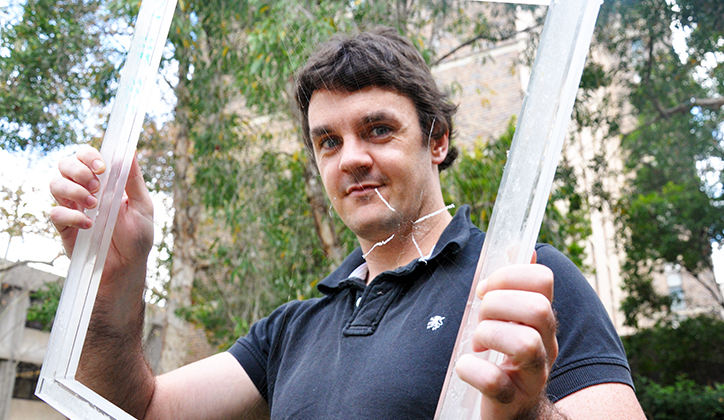Spider silks are remarkable natural fibres. They are lightweight and flexible, with the load-bearing capacity of high-tensile steel.
A recent revelation is that silks from certain spiders (Orb-weavers) are also high quality optical materials. Silks from these spiders resemble miniature optical fibres – the same sort used in communications – but are over 100 times as fine, with thicknesses approaching just 1/1000th the width of a human hair.
Research lead by Dr Douglas Little from the Macquarie Photonics Research Centre, Department of Physics and Astronomy, is focused on understanding how light interacts with these hyper-fine silks. A major aspect of this is the measurement of a fundamental optical property called refractive index; how much light slows down when it travels through a material.
“We have developed ways of measuring refractive index that are a 20-fold improvement on previous methods. This is significant, because we now have sufficient precision to measure how the refractive index of spider silks responds to environmental conditions such as temperature, humidity, strain or pH,” said Douglas.
“This is exciting, as it opens up the prospect of using spider silks in a diverse range of technological applications.”
Spider silks for example, could be used as mechanically-robust, miniature optical fibres to connect integrated optics and electronics; or as chemical, biological and medical sensors.
Spider silks seem especially suitable for bio-medical applications because their protein composition makes them especially compatible with biological systems.
There are also prospects to further enhance the properties of spider silks by incorporating nanoparticles into the protein structure, or through genetic modification. Importantly too, spider silks can be produced efficiently and sustainably.
“In the future, we may very well be farming optical materials from spiders and other insects, rather than producing them in factories,” said Douglas.

